Toyota C-HR vs Volvo EC40 – Differences & prices compared
Compare performance, boot space, consumption and price in one view.
Find out now: which car is the better choice for you – Toyota C-HR or Volvo EC40?
The Toyota C-HR (SUV) comes with a Full Hybrid or Plugin Hybrid engine and Automatic transmission. In comparison, the Volvo EC40 (SUV) features a Electric engine with Automatic transmission.
When it comes to boot capacity, the Toyota C-HR offers 447 L, while the Volvo EC40 provides 404 L – depending on how much space you need. If you’re looking for more power, decide whether the 223 HP of the Toyota C-HR or the 442 HP of the Volvo EC40 suits your needs better.
In terms of consumption, the values are 0.80 L per 100 km for the Toyota C-HR, and 16.20 kWh for the Volvo EC40.
Price-wise, the Toyota C-HR starts at 29100 £, while the Volvo EC40 is available from 46600 £. Compare all the details and find out which model fits your lifestyle best!
Toyota C-HR
The Toyota C-HR stands out with its distinctive and bold design that combines sleek, angular lines with a sporty posture. Its comfortable and stylish interior is equipped with advanced technology features, providing a seamless driving experience. The vehicle offers impressive handling and performance, making it a compelling choice for those who appreciate a blend of practicality and flair on the road.
details @ Toyota
@ Toyota
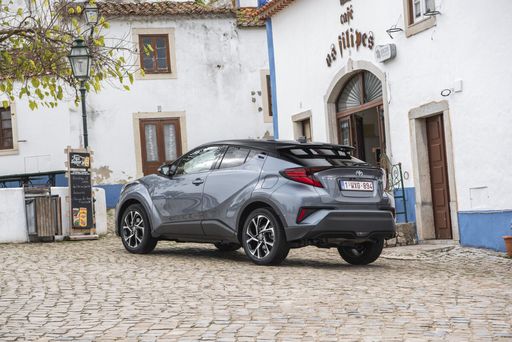 @ Toyota
@ Toyota
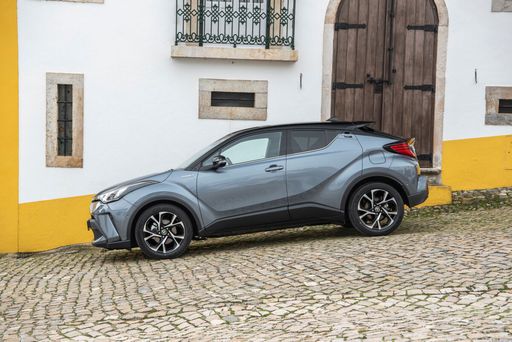 @ Toyota
@ Toyota
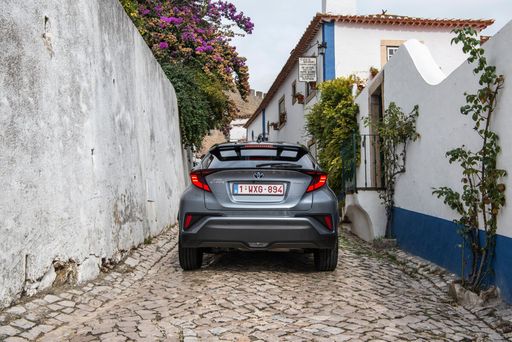 @ Toyota
@ Toyota
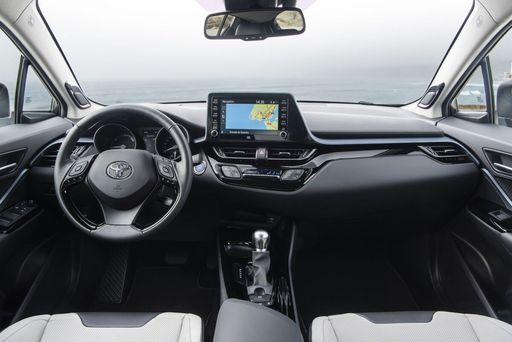 @ Toyota
@ Toyota
Volvo EC40
The Volvo EC40 seamlessly combines cutting-edge technology with sleek Scandinavian design, offering a refined driving experience. With its advanced safety features and user-friendly infotainment system, this model caters to both seasoned drivers and modern tech enthusiasts. The vehicle's impressive efficiency and environmentally conscious engineering make it a standout choice for those seeking sustainability without compromising on style.
details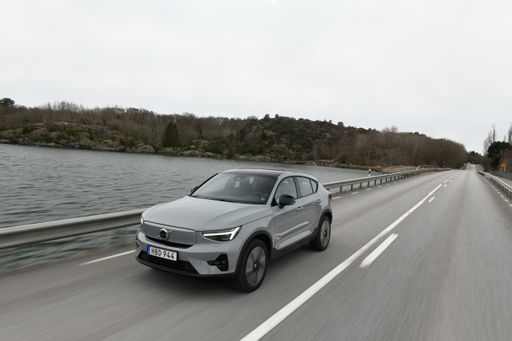 @ media.volvocars.com
@ media.volvocars.com

|

|
|
|
|
Costs and Consumption |
|
|---|---|
|
Price
29100 - 42800 £
|
Price
46600 - 59000 £
|
|
Consumption L/100km
0.8 - 5.1 L
|
Consumption L/100km
-
|
|
Consumption kWh/100km
-
|
Consumption kWh/100km
16.2 - 17.3 kWh
|
|
Electric Range
68 km
|
Electric Range
488 - 584 km
|
|
Battery Capacity
-
|
Battery Capacity
67 - 79 kWh
|
|
co2
17 - 115 g/km
|
co2
0 g/km
|
|
Fuel tank capacity
43 L
|
Fuel tank capacity
-
|
Dimensions and Body |
|
|---|---|
|
Body Type
SUV
|
Body Type
SUV
|
|
Seats
5
|
Seats
5
|
|
Doors
5
|
Doors
5
|
|
Curb weight
1505 - 1755 kg
|
Curb weight
2065 - 2185 kg
|
|
Trunk capacity
350 - 447 L
|
Trunk capacity
404 L
|
|
Length
4362 mm
|
Length
4440 mm
|
|
Width
1832 mm
|
Width
1873 mm
|
|
Height
1558 - 1564 mm
|
Height
1591 mm
|
|
Payload
375 - 425 kg
|
Payload
395 - 435 kg
|
Engine and Performance |
|
|---|---|
|
Engine Type
Full Hybrid, Plugin Hybrid
|
Engine Type
Electric
|
|
Transmission
Automatic
|
Transmission
Automatic
|
|
Transmission Detail
CVT
|
Transmission Detail
Reduction Gearbox
|
|
Drive Type
Front-Wheel Drive, All-Wheel Drive
|
Drive Type
Rear-Wheel Drive, All-Wheel Drive
|
|
Power HP
140 - 223 HP
|
Power HP
238 - 442 HP
|
|
Acceleration 0-100km/h
7.4 - 9.9 s
|
Acceleration 0-100km/h
4.6 - 7.3 s
|
|
Max Speed
175 - 180 km/h
|
Max Speed
180 km/h
|
|
Torque
-
|
Torque
420 - 670 Nm
|
|
Number of Cylinders
4
|
Number of Cylinders
-
|
|
Power kW
103 - 164 kW
|
Power kW
175 - 325 kW
|
|
Engine capacity
1798 - 1987 cm3
|
Engine capacity
-
|
General |
|
|---|---|
|
Model Year
2024 - 2025
|
Model Year
2024
|
|
CO2 Efficiency Class
C, B
|
CO2 Efficiency Class
A
|
|
Brand
Toyota
|
Brand
Volvo
|
Toyota C-HR
Revolutionising the Crossover Segment: The Toyota C-HR
The Toyota C-HR has firmly established itself as a standout contender in the compact crossover segment. Known for its distinct design and hybrid capabilities, the C-HR continues to prioritise innovation and efficiency. In this article, we delve into the technical details that make the 2024 iteration a compelling choice for discerning buyers.
Distinctive Design and Aerodynamics
The Toyota C-HR boasts a striking design that combines angular lines with modern aesthetics. This isn't merely for show; the design enhances aerodynamics, improving fuel efficiency and handling. With dimensions of 4362mm in length and a sophisticated structure, the C-HR strikes a balance between urban agility and on-road stability.
Impressive Hybrid Powertrains
The C-HR lineup offers innovative hybrid and plug-in hybrid drivetrain options. The full hybrid system is tailored for those who seek both economic and environmental benefits. It combines a petrol engine with an electric motor to deliver power outputs ranging from 140 to 223 PS, achieving remarkable fuel consumption rates from 0.8 to 5.1 L/100km. The 2.0 Plug-In Hybrid variant impresses with an electric range of 67 km, ideal for urban commuters.
Unmatched Efficiency and Performance
Acceleration figures for the C-HR range from 7.4 to 9.9 seconds to reach 0-100 km/h, ensuring a responsive driving experience. Maximum speeds between 175 and 180 km/h cater to those who appreciate a bit of zest on the open road. Coupled with CVT automatic transmission and both front-wheel and all-wheel-drive configurations, the C-HR adapts to various driving conditions with ease.
Advanced Technology and Features
Inside, the C-HR is equipped with the latest technology aimed at providing connectivity and comfort. The model hosts an array of features across its diverse trim levels, including Business Edition, Lounge, and the sporty GR SPORT. Each variant is designed to meet the demands of different lifestyles, ensuring there's a C-HR model to suit every taste.
Sustainability and Cost Efficiency
With CO2 emissions ranging from 19 to 115 g/km, the C-HR stands as a testament to Toyota's commitment to sustainability. Financially savvy consumers will also appreciate the running cost, with monthly expenses from €959 to €1204, and a cost per km as low as 38.4 cents. Such efficiency makes the vehicle an attractive option for eco-minded buyers.
Conclusion: A Forward-Thinking Choice
The 2024 Toyota C-HR embodies Toyota's forward-thinking approach to automotive innovation, blending eco-friendly hybrid technologies with stylish design and practicality. It offers a glimpse into the future of driving, where efficiency meets elegance. Whether you're a city dweller or an adventure seeker, the C-HR promises a driving experience that is both enjoyable and environmentally conscious.
Volvo EC40
Introduction to the Volvo EC40
The Volvo EC40 has emerged as a standout model in the electric SUV market, embodying a splendid fusion of Scandinavian design and state-of-the-art technology. As part of Volvo’s endeavour towards a sustainable future, the EC40 caters to environmentally conscious drivers who seek a blend of performance, luxury, and innovation.
Powertrain and Performance
The Volvo EC40 is available in both rear-wheel and all-wheel drive configurations, offering a flexible choice for various driving preferences. The model is powered by robust electric motors, with outputs ranging from 238 to 408 PS (175 to 325 kW). This range of power allows for a diverse driving experience, featuring a brisk acceleration from 0 to 100 km/h between 4.6 and 7.3 seconds, appealing to enthusiasts of spirited driving.
Fuel efficiency is a significant advantage of the EC40, boasting a consumption between 16.2 and 17.3 kWh per 100 km. Moreover, the vehicle's electric range impresses with figures stretching from 487 to 584 km, ensuring that long drives are as feasible as they are economical.
Innovative Battery Technology
Equipped with high-capacity batteries ranging from 67 to 79 kWh, the Volvo EC40 leverages advanced battery technology to offer reliability and longevity. This innovation helps in maintaining exceptional energy efficiency while adhering to Volvo’s commitment to reducing environmental impact.
Design and Dimensions
The signature Scandinavian design of the EC40 embodies elegance through its simplistic yet luxurious aesthetics. Its dimensions — 4440 mm in length, 1873 mm in width, and 1591 mm in height — are crafted to provide optimal space and comfort without compromising sleekness. The interior accommodates up to five passengers comfortably, with a boot offering a 404-litre capacity, making it ideal for adventure trips or daily commutes.
Safety and Technology
Volvo has long been synonymous with safety, and the EC40 continues this legacy with an array of advanced safety and driver assistance technologies. The SUV is equipped with cutting-edge features such as automated emergency braking, lane-keeping assistance, and BLIS (Blind Spot Information System), designed to ensure a stress-free and secure driving experience.
Conclusion
The Volvo EC40 stands as a testament to Volvo's dedication to innovation in the automotive industry. With an excellent blend of performance, technology, and efficiency, alongside impressive environmental credentials — including a CO2 efficiency class of A and zero emissions — the EC40 represents a beacon of Volvo’s sustainable future in electric mobility.
What drivetrain options does the Toyota C-HR have?
The Toyota C-HR is available as Front-Wheel Drive or All-Wheel Drive.
The prices and data displayed are estimates based on German list prices and may vary by country. This information is not legally binding.
